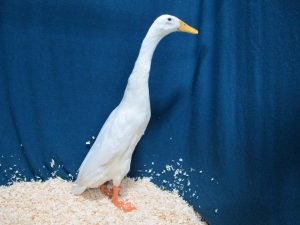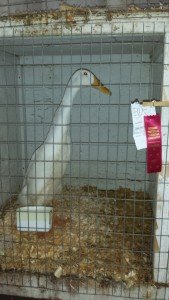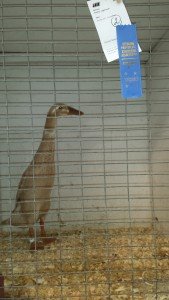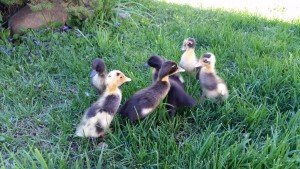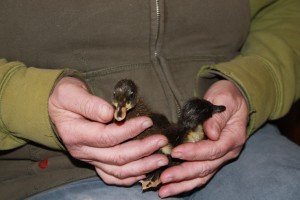For 2026, we are not selling Indian Runner ducklings.
Wild Acres, located in Armstrong, BC, Canada, sells Indian Runner ducks hatching eggs. We ship Indian Runner hatching eggs to BC, YT, AB, SK, and MB, Canada by Xpresspost.
We will no longer be hatching or shipping ducklings for customer orders.
Indian Runner Ducks are on the (Recovering) list:
Runner or Indian Runner Duck – The Livestock Conservancy
Wild Acres Indian Runner ducks have been breeding on our farm since we started in 2012. They are a colourful free-ranging breeding flock that runs together in the field and consists of a mixture of utility and show lines. Therefore, some of our ducks stand more upright than others. We cannot guarantee show quality or specific colours for ducklings or hatching eggs.
Waterfowl are less prone to most common poultry diseases and parasites and are very hardy in cold and wet weather. Our waterfowl flock free ranges daily throughout the year. They are healthy and long-lived birds.
Showing Indian Runner Ducks
Our ducks are not housed with added light or heat during the winter, so they stop laying in the fall, have a break and they will start laying again in March when the natural light increases. We prefer to give all our birds a break as we feel it is better for their well-being and the health of our flock.
We hatch many ducks before we pick and choose a couple for showing. Poultry and waterfowl shows are a competition so not all birds in your flock will make the cut. It is better to be very picky as you can be certain that the judges will be.
Health, feather quality, height, stance, colour, beak colour, a slim body, the curl in the tail feathers, and age, as well as other APA standards, are all contributing factors. Usually, younger birds do better than older birds in a show. Older birds age, molt, and compete with younger birds in a flock, unless they are kept separate and pampered.
The first records of them being in an exhibition were in 1877 at the Dumfries Show in Scotland. In 1898 they were admitted into the American Standard Registry.
Keeping Indian Runner Ducks
Indian Runner ducks are egg-laying ducks. Our mixed flock of Indian Runner ducks run in a small field with chickens, turkeys, and geese. The Indian Runner’s wings are very small, eliminating its ability to fly so fencing height is not as much of a concern when it comes to keeping them in. They waddle and or run in the same manner as a penguin.
Indian Runner ducks are hardy birds who are both excitable and wonderfully social, with a strong urge to flock together. They do not fly and prefer to run together in groups. They are also shy ducks and they will not harm other animals or people.
You can hold them, but they will not run after you like our goslings do. However, some of our customers who spend lots of time with them say they do greet them and run around with them while they do chores.
If you are looking for consistent winter egg production in cold climates then ducks, like chickens, must be exposed to a minimum of 13 to 14 hours of light daily. During the short days between September and April, laying birds need supplemental lighting in most areas of the Northern Hemisphere.
The best thing about Indian Runners is that this duck breed eats less in the way of grain and pellet supplements than big table ducks. Ducklings can be fed waterfowl feed or non-medicated chick starter for up to 3 weeks and then switched to grower pellets. Our adult ducks enjoy eating insects (including wasps), greens, grains such as wheat, and pelleted food along with grit and oyster shells.
Indian Runner Ducks are on the Livestock Conservancy’s Priority List.
We no longer hatch or ship ducklings. We only sell their hatching eggs.
Canadian National Poultry Show, Armstrong, BC 2017 Champion Light Duck; White Runner Young Duck: Champion Light Duck Overall & Reserve Champion Waterfowl.
White Indian Runner Drake- Interior Provincial Exhibition 2017 Champion Waterfowl
Reserve Champion Duck at the Interior Provincial Exhibition in 2016
Wild Acres Indian Runner ducks are a colourful mixed breeding flock that has been living together since 2012 in a free-range environment. Our stock is a mixture of show stock from Holderread Waterfowl lines www.holderreadfarm.com and two lines of utility stock.
“Dave Holderread is an author of several books and has enjoyed raising and studying domestic geese and ducks continuously since 1961. This is a good article that he wrote for Backyard Poultry: “How to Raise Ducks in Your Backyard-A Duck Farming Guide for Beginners” https://backyardpoultry.iamcountryside.com/poultry-101/how-to-raise-ducks-in-your-backyard/
We cannot ship just show quality Holderread eggs as our ducks are not separated during our breeding season. We prefer to have the vigor and egg-laying utility lines included in our flock too. Therefore, we cannot guarantee specific colours for hatching eggs or for ducklings. You get what is laid when you buy hatching eggs.
Our Indian Runner flock is a mix of colours including white, trout, pencil, black, chocolate, and blue and some are of mixed colouring. Most of them tend to choose a mate that is the same colour but sometimes they don’t. They all share the same nesting areas and lay their blue or white eggs. The ducklings that hatch on our farm are a diverse and colourful bunch. Some ducklings will stand more upright than others, but they are all Indian Runner ducks.
The Indian Runner History
Indian Runners have a long history as evidenced by ancient Javan temple carvings indicating that Runner-type ducks existed in Indo-China 2000 years ago. Indian Runner ducks were bred by ancient farmers in Asia to stand more upright than other duck breeds to allow them to cover ground quickly when keeping the farmer’s rice paddies to glean scattered grain, weed seeds, snails, insects, larvae, and small lizards. You will not find a better foraging duck than the Runner.
Indian Runner Duck Eggs and Meat
The Runner is the “Leghorn” of the duck breeds for eggs and a veritable egg-machine when properly handled. Standard Indian Runners lay between 180 and 230 or more blue or white eggs per year depending on their line but some Holderread Indian Runner lines can lay up to 300 eggs per year as he bred for both looks and egg-laying capabilities. Runners lay an egg exactly one-half larger than the standard size of hens’ eggs. Their eggs have a harder shell, so they don’t break as easily as chickens do and they are better for baking.
Many people who are allergic to chicken eggs can eat duck eggs.
Lifespan
Runners vary in lifespan from 4 – 12 years and their eggs take about 28 days to hatch. Our flock ranges in age from 1-9 years of age. Drakes live longer than ducks because they do not lay eggs. They live longest if given plenty of space to free range and opportunities to find some of their food.
APA Standard Weights: Drake: 1.6 – 2.3 Kg, Duck: 1.4 – 2 Kg.







